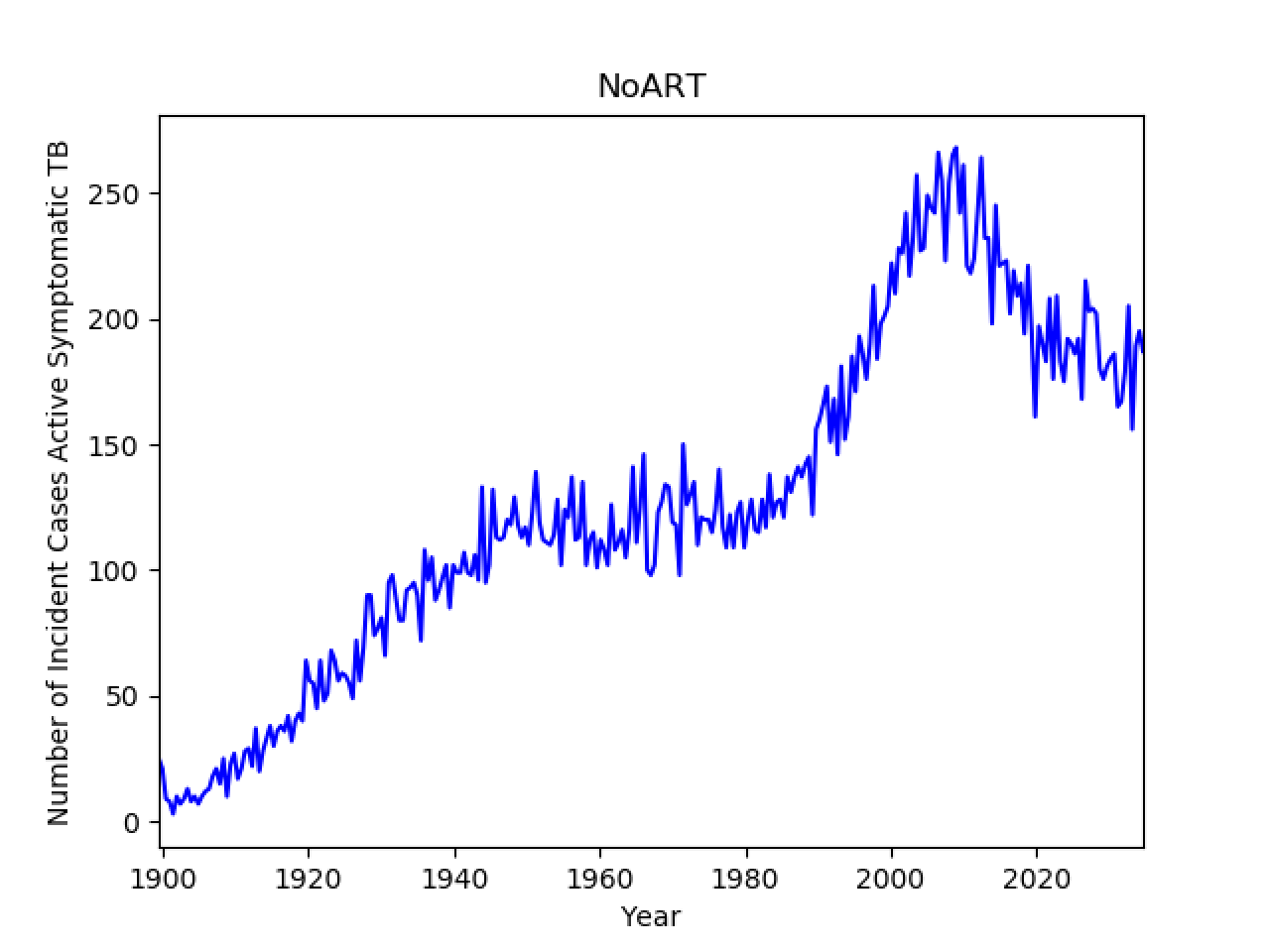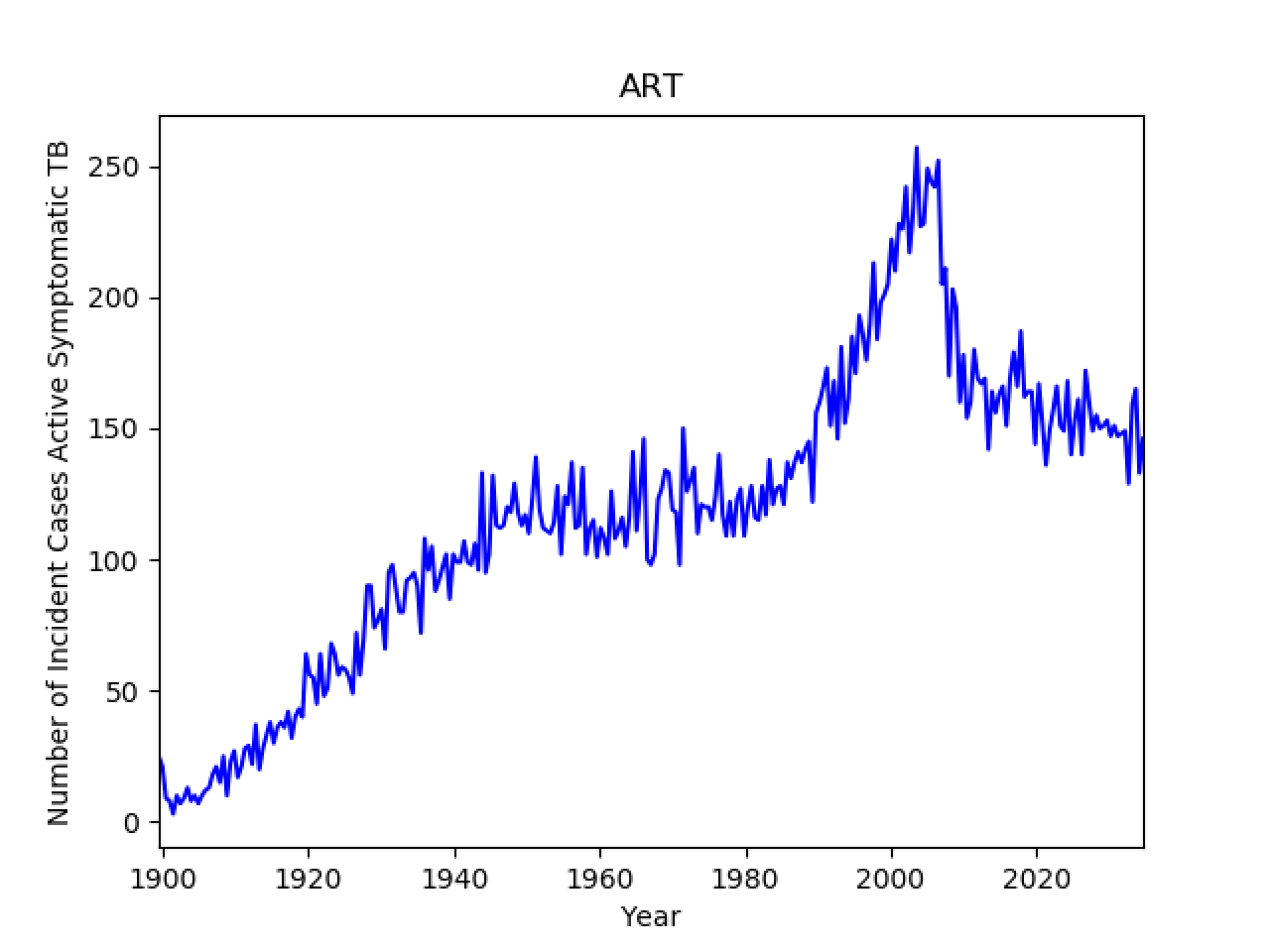TB with HIV coinfection¶
When individuals are infected with both tuberculosis and HIV, both diseases tend to speed up the progression of the other. EMOD enables you to simulate TB transmission with or without including coinfection with HIV. This model does not include transmission of HIV; instead, you can enable coinfection, configure the rates of disease progression for coinfected individuals, and set the prevalence of HIV in the population. You may want to use the EMOD HIV model to estimate prevalence of HIV prior to running simulations using the TBHIV model.
In HIV+ individuals, latent TB progresses to active TB disease at a much higher rate. While the lifetime activation rate among HIV- people is around 5-10%, those numbers represent the annual risk for HIV+ individuals. HIV+ people with TB are also twice as likely to die as those without TB.
Once TB is active, the presentation of the disease is also different. HIV+ patients may experience fewer TB symptoms, including negative chest X-rays. This subclinical presentation can cause delays in diagnosis and treatment. HIV+ individuals are also at much higher risk of extrapulmonary TB.
For example, see how the introduction of antiretroviral therapy (ART) for treating HIV in 2002 also caused a sharp decline in the incidence of TB.

Figure 1: The incidence of active TB without the introduction of ART¶

Figure 2: The incidence of active TB with the introduction of ART¶
To run these simulations yourself, see the TB/HIV_Coinfection scenarios in the downloadable EMOD scenarios zip file. Review the README files there for more information.